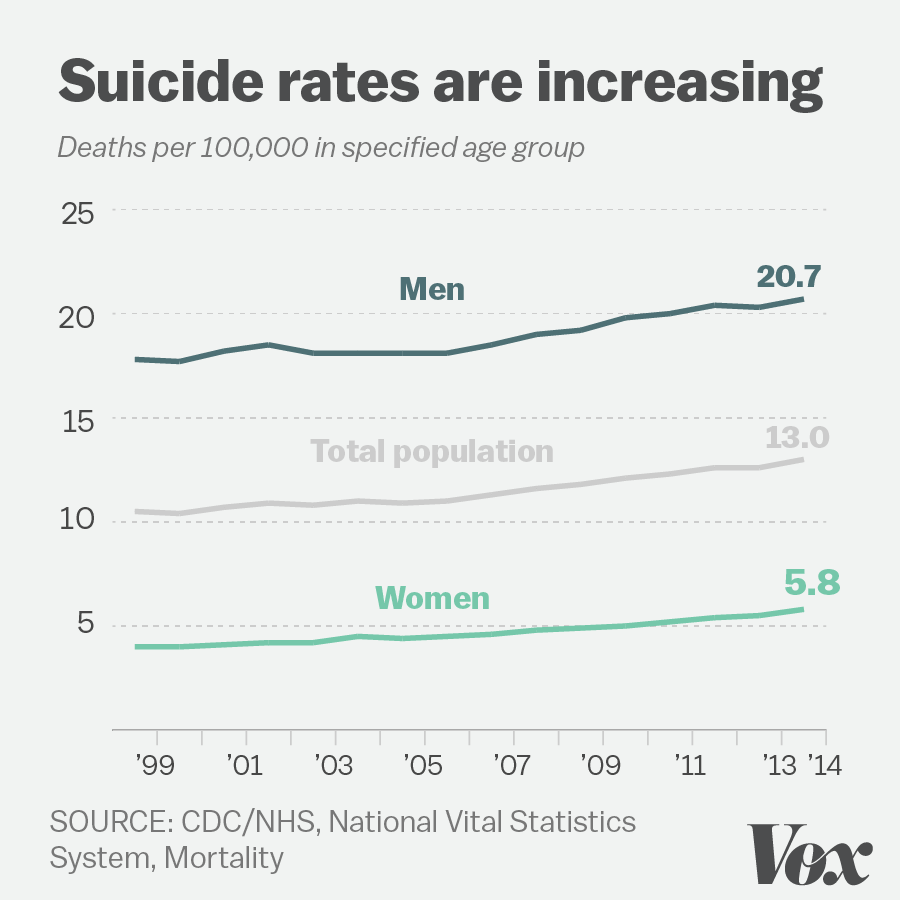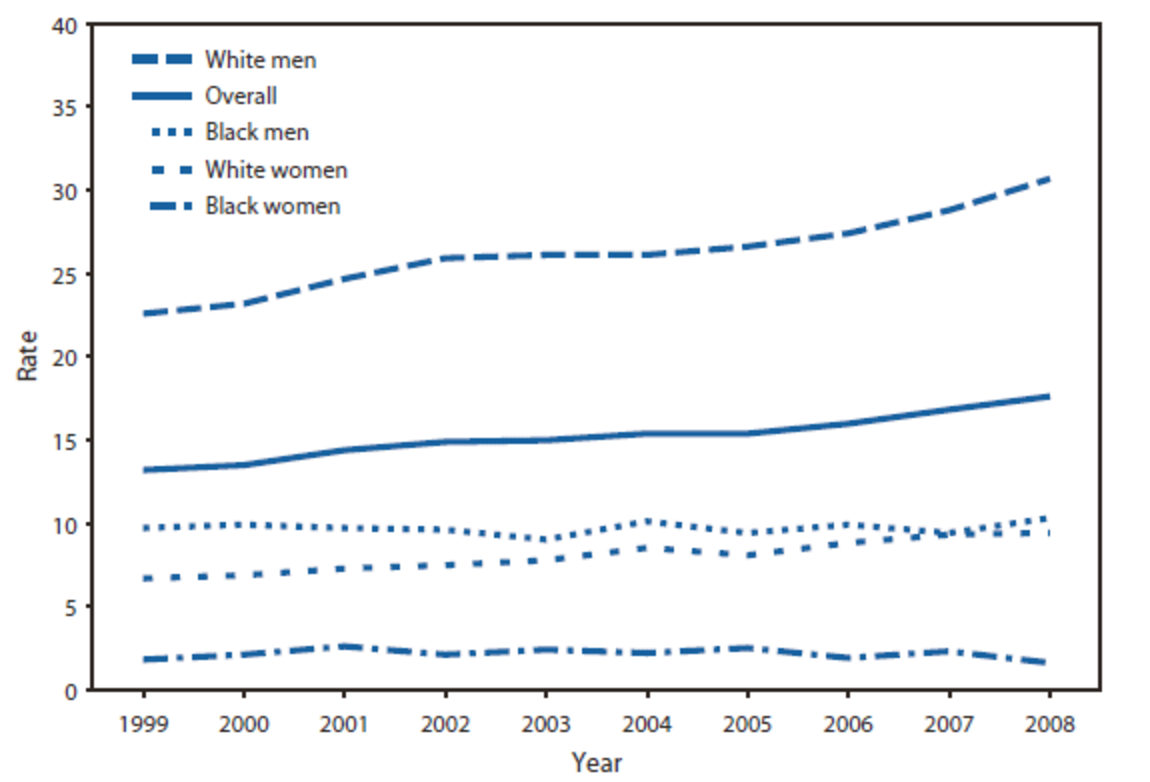Suicide Trend on the Rise

By:
Today marks the 13th annual World Suicide Prevention Day. Created in 2003, the day centers around raising awareness about suicide, which the World Health Organization reports is the second leading cause of death in young adults. But as suicide prevention initiatives continue to grow, suicides themselves continue to rise, and no one is really sure why.
As Vox reported in April, data from the Centers for Disease Control and Prevention (CDC) shows suicides increased by nearly a quarter between 1999 and 2014.
 Vox/CDC - vox.com
Vox/CDC - vox.com
"We know about risk factors like psychiatric illnesses or a history of substance abuse, but we don't know the exact mixture," Dr. Alex Crosby, of the National Center for Injury Prevention and Control, told Vox. "It's hard to figure out what changed during that time period to have the rate go down and then go back up."
"The increase is broad-based," Sally C. Curtin, a lead author of the new report, told CNN in April. "If it were just one particular group, you could say 'that is where we need to focus,' " Curtin said.
One theory is that Americans are facing lower incomes, more drug abuse and a general sense of concern for their future. “This is part of the larger emerging pattern of evidence of the links between poverty, hopelessness and health,” Robert D. Putnam, a professor of public policy at Harvard, told the New York Times in April. Some experts speculate that social isolation could be a contributing factor as well, with a hike in divorce rates and a decrease in marriage rates, Julie Phillips, a professor of sociology at Rutgers who has studied suicide among middle-aged Americans, said in the New York Times piece.
What suicide statistics tell us.
Men are far more likely to commit suicide than women, with just over 20 deaths per 100,000 people for men and just under six for women, but both groups are committing suicide more frequently than in the past, according to the CDC report. The CDC found most male suicides are committed using a firearm, constituting over half of male suicides, while poisoning is the most likely method for females, at just over 34 percent of all female suicides. Both sexes are seeing an increase in suicide by suffocation.
Roughly 30,000 Americans commit suicide each year, and it's the second leading cause of death for people between the ages of 24 and 35. According to CDC data, Native Americans and Asians make up the smallest number of suicides, with Native Americans accounting for around 1 percent of suicides and Asians accounting for around 2 percent. White men account for 7 out of 10 suicides, according to the American Foundation for Suicide Prevention. As the graph below from the CDC illustrates, the rates at which white men are committing suicide are and have been much higher than the overall rate.
 CDC - cdc.gov
CDC - cdc.gov
While we don't know why suicides are increasing, we do know there are many ways to help prevent suicides.
Limiting gun access can help reduce the number of suicides, and widely available mental health treatment is also extremely helpful. Roughly two-thirds of people with mental health disorders do not have access to appropriate psychological services. It's clear we're not doing enough for those who need help the most. That said, organizations like the American Foundation for Suicide Prevention and The Light of Life Foundation are working to help reduce suicides.
If you're concerned you or someone you know might be at risk of suicide, please call the National Suicide Prevention hotline at: 1-800-273-8255.
